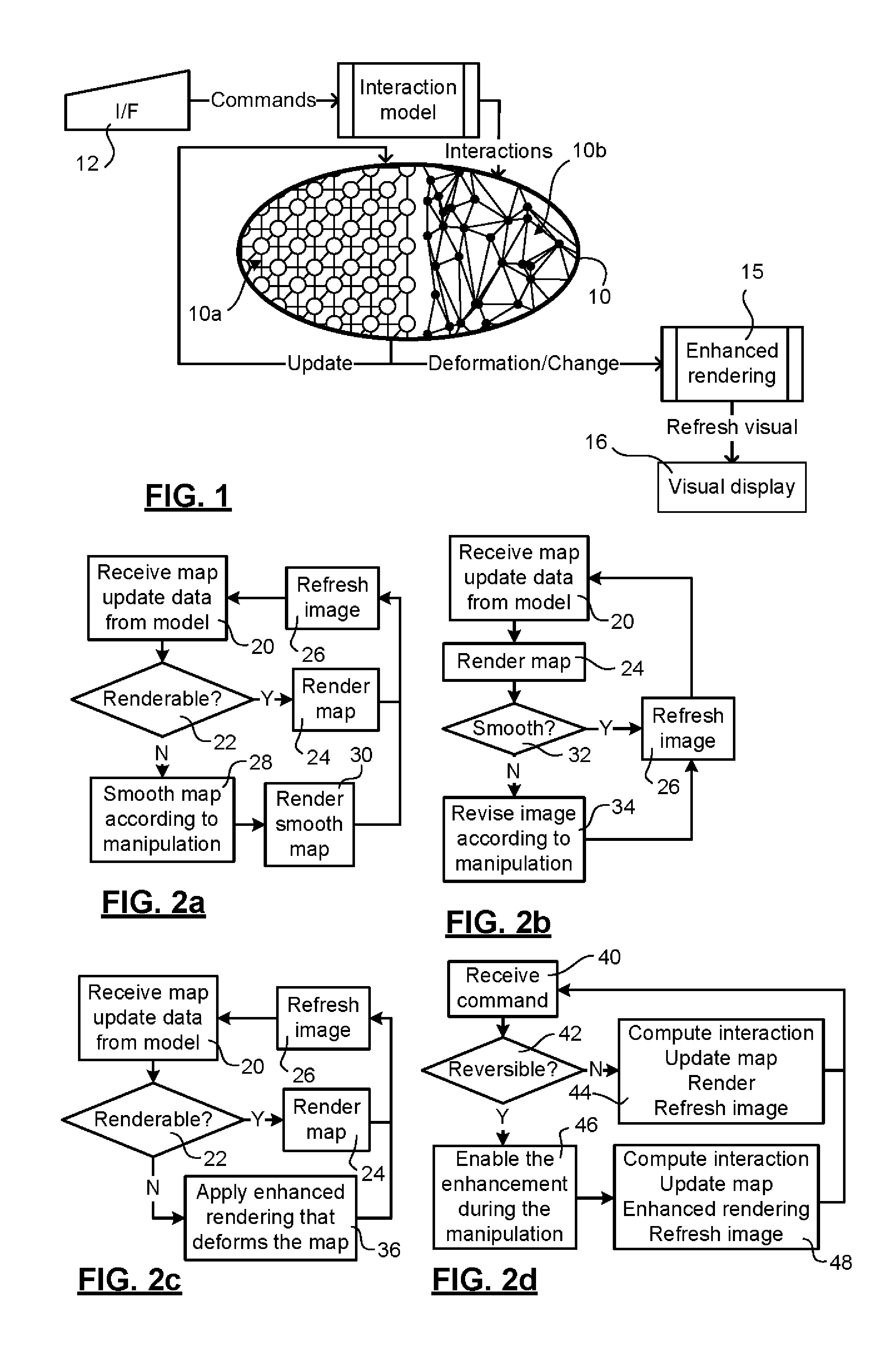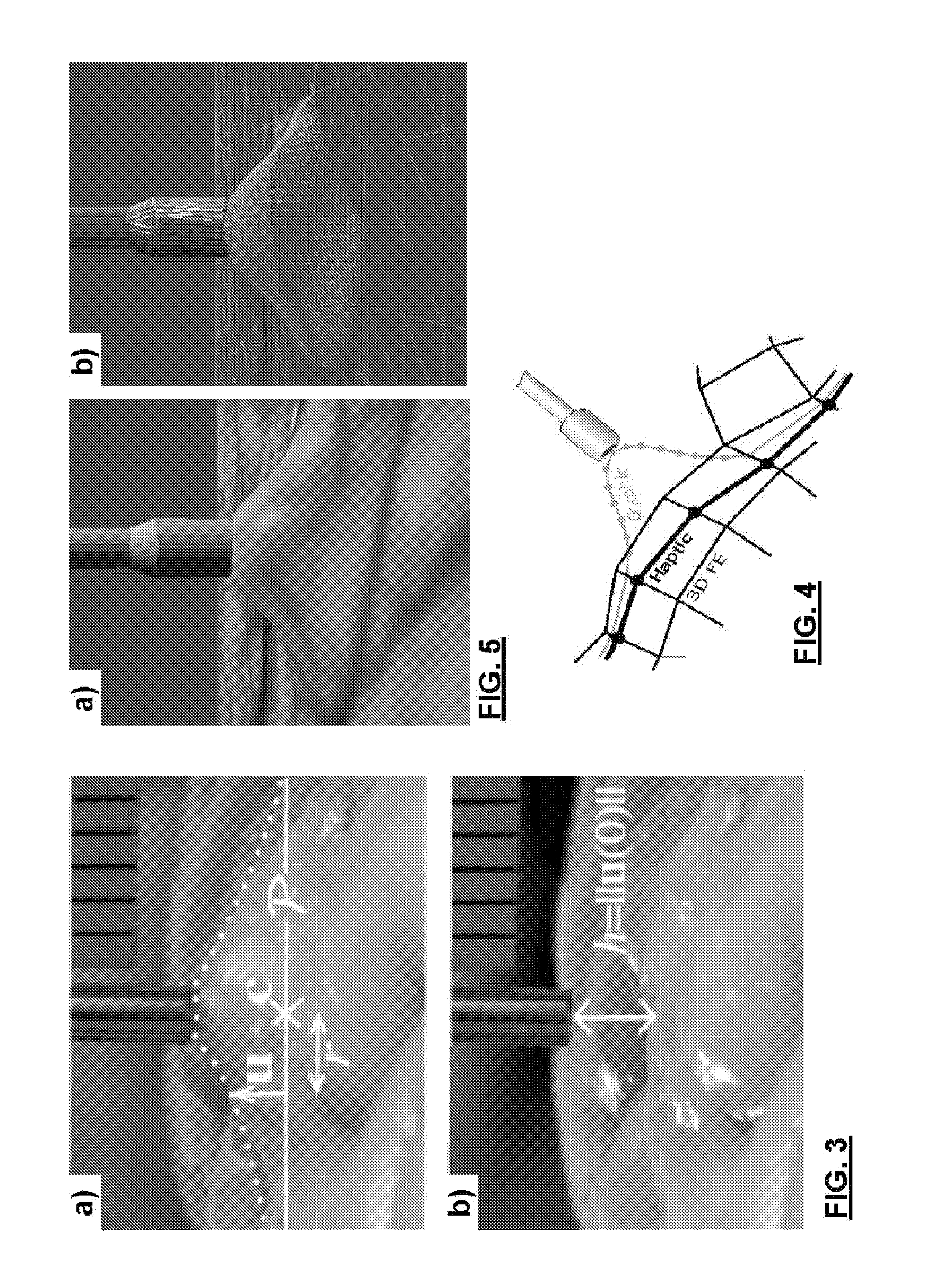Presentation-enhanced solid mechanical simulation
a solid mechanical and simulation technology, applied in the field of interactive simulation of elastic bodies, can solve the problems of loss of information, system evolution alone can be computationally expensive, and computation costs are high, and achieve the effects of increasing the complexity of the underlying model, high fidelity, and high effective resolution
- Summary
- Abstract
- Description
- Claims
- Application Information
AI Technical Summary
Benefits of technology
Problems solved by technology
Method used
Image
Examples
examples
[0047]Surgical aspirators are one of the most frequently used neurosurgical tools. There is a need for extensive training on neurosurgical simulators for interventions in general and use of aspirators in particular. Surgical aspirators are included in commercial simulators but studies on their mechanical behavior are scarce in the literature and the literature does not provide enough experimental data to develop a model suitable for a simulator. Simulators providing a visually and haptically realistic rendering of surgical aspiration are desirable, especially when provided with low-cost computers, while providing realism.
[0048]This instrument has two main functions: (A) aspiration, which is either the non-traumatic removal of blood and fluid or the removal of soft tissue, and (B) tissue holding. There is little published data on mechanical interaction between soft biological tissues and surgical aspirators. Applicant has contributed to this literature in a paper entitled: A Computer...
PUM
 Login to View More
Login to View More Abstract
Description
Claims
Application Information
 Login to View More
Login to View More - R&D
- Intellectual Property
- Life Sciences
- Materials
- Tech Scout
- Unparalleled Data Quality
- Higher Quality Content
- 60% Fewer Hallucinations
Browse by: Latest US Patents, China's latest patents, Technical Efficacy Thesaurus, Application Domain, Technology Topic, Popular Technical Reports.
© 2025 PatSnap. All rights reserved.Legal|Privacy policy|Modern Slavery Act Transparency Statement|Sitemap|About US| Contact US: help@patsnap.com



